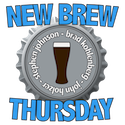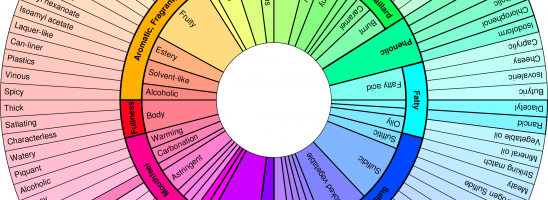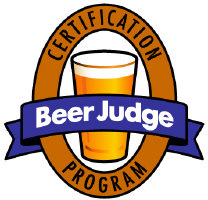Tools For Proper Beer Analyzation
Despite what many people may think, there is an actual science to the proper tasting and analyzation of beers.
Now yes, I understand that experiences with and individual perceptions of beer does vary from person to person. Some people prefer to have an emotional connection with beer. They tend to review beer using expressive and artistic descriptors as opposed to scientific terminology.
Don’t get my wrong though — the emotional method of beer analyzation is by no means “unprofessional.” There is no real or wrong way to experience beer. After all, beer is in the eye of the beholder.
However, it is important to note that there is a universally recognized and accepted language in the beer industry. Whereas describing a beer in an artistic format makes an excellent visual for readers and consumers, I guarantee if you tell a brewer that her beer takes like rainbows and butterflies she will look at you like you have three heads.
So exactly how does one learn how to “speak beer”? Learning proper beer terminology can seem daunting at first. But have no fear, its not like learning to write code. In fact, most of beer terminology already exists in our language.
The key is learning what terms to use when.
One does not have to go out and buy books on the science and engineering of brewing in order to learn this language. There are several resources on proper beer analyzation that can be more easily ”digested” than hitting the “big kid” textbooks.
My favorite beer analyzation resources are as follows:
_________________________________________________
TASTING BEER — An Insider’s Guide to The World’s Greatest Drink
by: Randy Mosher
Randy Mosher is a public speaker, teacher, writer, and enthusiastic promoter of traditional beer styles. He is the author of The Brewer’s Companion and Radical Brewing, as well as many articles and columns for All About Beer, the country’s leading beer magazine.
From the back cover:
Everybody knows how to drink beer, but few know how to really taste it. Tasting Beer is a lively exploration of the culture, chemistry, and creativity that make craft beers so wonderfully complex. Heighten your enjoyment of every glass with an understanding of the finer points of brewing, serving, tasting, and food pairing.
Enough said.
_________________________________________________
THE BEER FLAVOR WHEEL
by: This website was created by some brewer friends who will remain nameless…
The Beer Flavor Wheel is perfect or both budding beer connoisseurs as well as professionals. It breaks down the entire tasting experience in general categories. Each category gets further brown down until you reach the “scientific” conclusion.
For example, I get “vegetal” characteristics in a beer. Now let us break vegetal down: is is resinous, grassy or nutty? Let’s say I get resinous. Let us break it down further: is it woody or piney.
Naturally, one needs to have a semi-decent palate and educational background that predisposes them to understanding this wheel. However, with the help of google and a significant amount of time tasting with learned professionals — the information on this wheel becomes second nature.
And for those of you who do not understand every term on this wheel, do not feel overwhelmed or inadequate. Developing a palate doesn’t happen overnight … or even over a decade. It is a constant learning process. My palate is admittedly novice. But that does not stop me from trying to advance it, ya feel me?
If you want a good glossary of proper terms to use, this wheel is definitely a top resource.
_________________________________________________
THE BEER JUDGE CERTIFICATION PROGRAM STYLE GUIDELINES
For some time now, I have been following the BJCP format of reviewing beer. Why? Because its system is well-established and internationally recognized. Even more badass? BJCP has a FREE, yes free, iPhone App … with ALL of its style guidelines. Yeah, go download it like now.
Why have style guidelines?
Styles are a convenient shorthand for discussing beer. They allow all those who are tasting and describing a beer to use a common framework and language. Style Guidelines are designed to assist organizers, entrants and judges participating in beer, mead and cider competitions by providing a standardized set of descriptions of beer, mead and cider styles.
The style descriptions are based on currently acknowledged world class examples, historical references to styles no longer brewed, and writings of noted beer researchers and journalists.
One of the purposes of the BJCP is to promote beer literacy, which includes understanding more about the world’s great beer styles. The BJCP has been operating since 1985 and has been publishing guidelines for much of that history.
The BJCP has spent considerable time researching world class beer examples, visiting renowned breweries, talking with noted authors, and searching key reference materials for information on beer styles. It has collected this information into its guidelines as a way to reduce the amount of time, effort and variability in learning this knowledge.
_________________________________________________
Of course, there are more than three major resources on the proper tasting and analyzation of beer. But these three happen to be my particular favorites. Each contributes to beer education from a different aspect of the spectrum — and together, these resources are golden.
Wanna “speak beer”? Check out the resources above and you are well on your way to understanding the (not-too) cryptic language of beer.
For more indepth knowledge, check out:
Cheers!
Disclaimer: In addition to being a craft beer professional, I am a creative writer. I am in no way insulting those who chose to describe beer in more artistic and expressive terminology.





















Stephen Beaumont March 24th, 2010 at 4:48 am
Before I first started writing beer reviews — back in the stone age before any of the resources you reference existed — I was concerned more with learning how to taste in general than I was with how to taste beer, which I think is something people sometimes pass over these days. Few of we North Americans are raised to really taste our food, and as such do not grow up equipped with the tools for flavour analysis. Hence, first we need to learn to taste everything, and only then should we focus on analyzing beer.
Later, when I started actually writing about beer, I decided logically (to me) to use words and phrases people could relate to things they already knew, like berry fruit, for example, or the scent of a walk in the autumn woods (still a favourite, from an early description of a local best bitter). For the mass consumer writing I do, I still believe that’s the best road to travel.
As for beer styles, well, beyond certain elemental ones — American pale ale, Bohemian pilsner, dry stout, etc. — most have been rendered pretty much meaningless, IMO. I mean, “American-Belgo style dark ale”? What the hell is that when it’s at home? And don’t get me started on quadrupel!
What all the above means beyond an early morning rant, I’m not sure. Bottom line: I believe that anything which encourages people to think about what they drink and eat is positive; anything that promotes mindless consumption, or uncritical imbibing — meaning drinking a beer because it’s a beer rather than because it’s a good beer — is a bad thing.